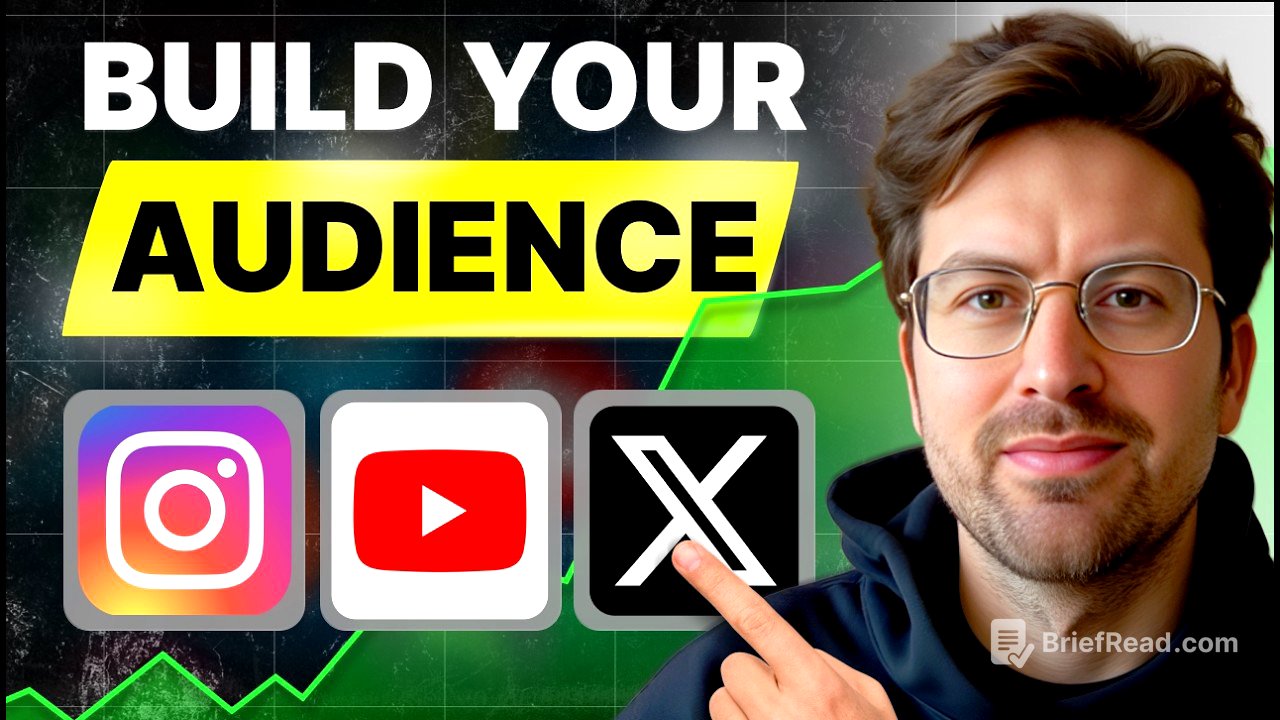TLDR;
In this episode, Greg Isenberg interviews Tyler Lmco, a creative professional who has worked on successful projects like Epic Meal Time. Tyler is looking to shift from being a "creative for hire" to building his own creative projects and audience. Greg provides advice on the challenges and mindset shifts involved in this transition, as well as strategies for building an engaged online audience as a solo creator. They discuss the pros and cons of using AI tools for ideation, the importance of finding your unique value proposition, and the pros and cons of different content formats like live streams, short-form videos, and long-form productions. Overall, the conversation offers practical insights for creators looking to build a sustainable online presence.
- Transitioning from being a "creative for hire" to building your own projects is challenging but rewarding
- Start small, focus on one platform, and figure out what content format and style works best for you
- Experiment with AI tools for ideation, but don't rely on them entirely - human collaboration is still valuable
- Build an engaged audience first before monetizing, and consider different revenue streams beyond just ads
- Embrace "experimenting in public" - putting out imperfect content is better than not creating at all
Building an Internet Audience from Scratch [0:00]
Greg and Tyler dive into the specifics of how Tyler can build an online audience from scratch for his new creative project. They discuss the importance of choosing a primary platform to focus on, in this case, YouTube.
Greg advises Tyler to think about what he genuinely enjoys creating, what content formats are working well on the platform, and what's missing in his niche that he could uniquely provide. The key is finding the intersection of these factors and being consistent in producing that type of content.
They also touch on the value of experimenting with different features the platform offers, like YouTube's community tools, while not getting too distracted from the core content strategy. Greg emphasizes the importance of just starting and iterating, rather than trying to have everything perfect before launching.
Additionally, they discuss the pros and cons of starting fresh on a new account versus trying to revive an existing one with a less engaged audience. Greg suggests that in Tyler's case, starting fresh may be the better option to build true momentum.
Overall, the conversation provides a framework for Tyler to approach building an online audience from the ground up, focusing on consistency, understanding his strengths and audience, and being willing to experiment and adapt along the way.
Leveraging AI Tools for Content Creation [24:22]
Greg and Tyler discuss the role of AI tools in the content creation process. Tyler shares that he has been hesitant to use AI tools extensively, but Greg highlights the potential benefits.
Greg recommends a tool called Descript, which can help with tasks like removing filler words, creating automatic video clips, and translating content into different languages. He suggests that these types of AI-powered tools can be valuable in streamlining the content production workflow, especially for solo creators.
However, Greg also emphasizes that AI should not replace human creativity and collaboration. He advises Tyler to use AI as a complement to his own ideation process, rather than relying on it entirely. The goal is to leverage technology to enhance the creative process, not to replace it.
Overall, the discussion encourages Tyler to explore AI tools selectively, focusing on how they can improve efficiency and reach, while still maintaining his unique creative voice and vision.
Exploring a Children's Content Niche [42:32]
Towards the end of the conversation, Tyler shares that he has been considering pivoting his content towards a children's or family-friendly audience. Greg sees this as an interesting opportunity, noting that the bar for high-quality children's content is often quite low, and the market is substantial.
They discuss the potential benefits and challenges of this approach. On the positive side, creating content for a younger audience could allow Tyler to stand out in a less crowded space and potentially reach a large, engaged viewership. However, Greg cautions that Tyler would need to carefully consider the tone, style, and overall brand he wants to cultivate, as it would be a significant shift from his current creative direction.
Ultimately, Greg encourages Tyler to experiment with this idea, perhaps by launching a separate channel or test content to gauge the audience's response. He emphasizes the importance of staying true to what excites Tyler creatively, while also being open to exploring new avenues that could lead to a sustainable, fulfilling creative career.
The discussion highlights the value of being adaptable and willing to try new things, even if they represent a departure from one's existing creative identity. It's about finding the right balance between playing to your strengths and being open to new opportunities.
